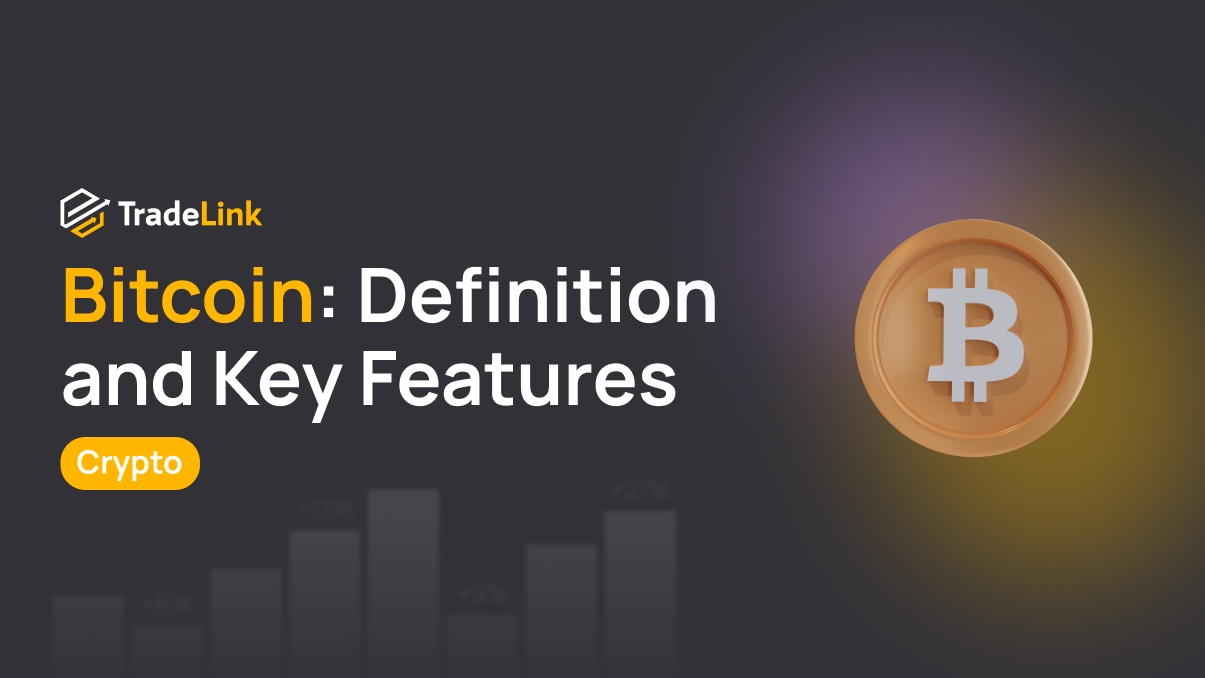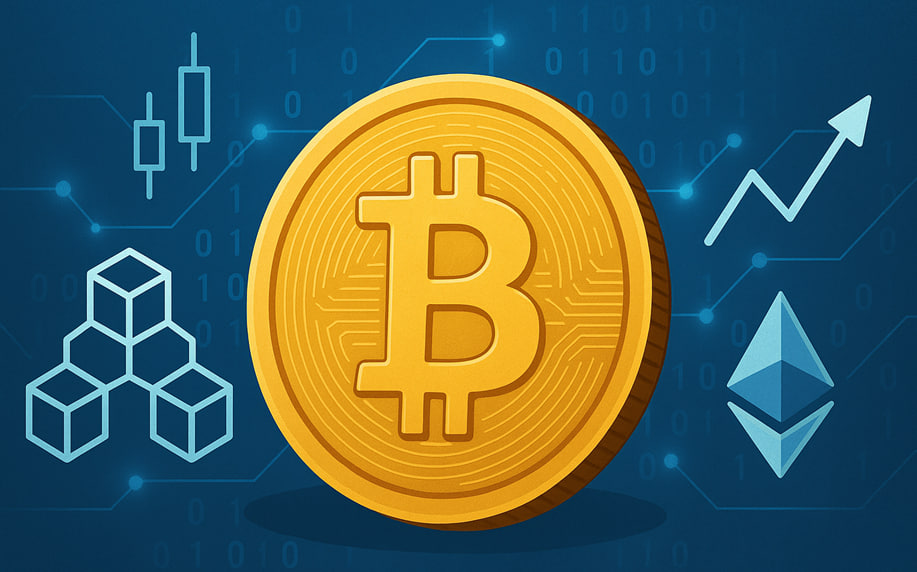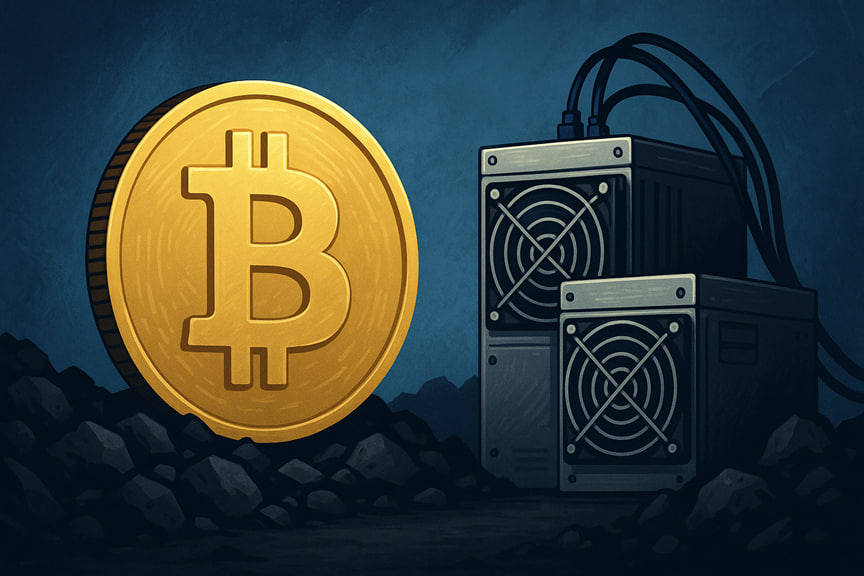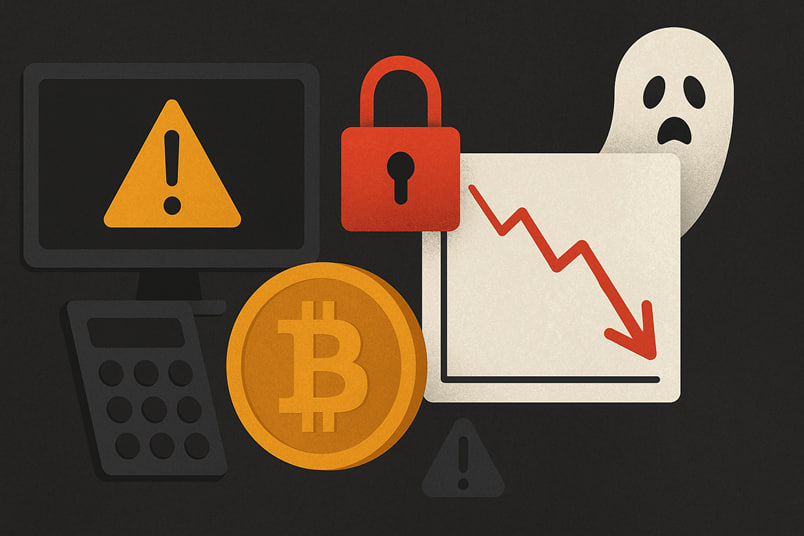Bitcoin: Definition and Key Features

Contents
- Introduction
- What Is Bitcoin
- Blockchain Technology
- Bitcoin Mining
- Advantages of Bitcoin
- Disadvantages and Risks
- How to Buy and Store Bitcoin
- The Future of Bitcoin
- Conclusion
Introduction
Bitcoin is the first and most well-known cryptocurrency in the world. Even those far removed from finance have heard of it. It is a digital currency that does not depend on countries or corporations. More and more people are becoming interested in it to preserve and grow their funds.
Bitcoin influences financial markets, becomes part of economic discussions, and frequently appears in global news headlines. Understanding Bitcoin means better understanding the future of finance.
What Is Bitcoin

Bitcoin is a digital currency that exists only on the Internet—it has no coins or banknotes. Its main difference from regular money is the absence of a central authority. No bank or government back Bitcoin. It was created by a person (or group of people) under Satoshi Nakamoto in 2008. The idea was simple: to make money that could be exchanged directly, without intermediaries.
Bitcoin operates on blockchain technology, which prevents transaction forgery and double spending. Its key feature is decentralization: no single person or organization controls the network. This ensures transparency, freedom, and resistance to censorship — all of which make Bitcoin so appealing.
Blockchain Technology
At the core of Bitcoin lies blockchain technology. This is a special system that records all transactions like a giant ledger. Each new transaction is added to the end of the chain as a new page. These pages are called blocks. All blocks are linked together, containing information about the previous one.
This chain is an open digital database where all Bitcoin transactions are recorded. These records are instantly copied and stored on thousands of computers worldwide. If someone tries to change the information, the other computers compare it with the original and reject the fake. Therefore, no one can secretly alter the data, keeping the system reliable and transparent.
A simple example:
-
You send Bitcoin to a friend.
-
The system checks whether you have enough funds.
-
The transaction is recorded in a new block.
-
This block is added to the chain.
-
All network participants receive the update.
Blockchain makes decentralization possible. No one can delete transactions or change the rules alone.
Bitcoin Mining

Mining is the process through which new Bitcoins are created and transactions are confirmed. Computers worldwide solve complex mathematical problems to add a new block to the blockchain. Miners receive a reward for a certain number of newly issued Bitcoins.
The reward is halved approximately every four years—this event is called a halving. Thanks to this mechanism, the total number of Bitcoins is limited: there will never be more than 21 million.
Mining consumes a lot of electricity, which causes debate. Some see it as harmful to the environment, while others consider it a necessary cost for the security and decentralization of the network.
Advantages of Bitcoin
Bitcoin has many advantages that have made it popular:
-
Anonymity. You don’t need to provide personal data to send or receive Bitcoins. However, all transactions are public and can be analyzed.
-
Low fees. International transfers can be cheaper than through banks, especially when the network is not congested.
-
Decentralization. A smartphone or a computer with internet access is enough to send or receive Bitcoin — no banks or intermediaries required.
-
Global accessibility. Anyone with internet access can use Bitcoin — no restrictions on middlemen or countries.
-
Investment potential. Bitcoin has risen from a few cents to tens of thousands of dollars. It’s often seen as a way to preserve capital, especially in unstable economies.
These advantages make Bitcoin a means of payment and a significant asset in financial markets.
Disadvantages and Risks
 Despite its benefits, Bitcoin also has drawbacks. It’s important to consider them before buying:
Despite its benefits, Bitcoin also has drawbacks. It’s important to consider them before buying:
-
Volatility. Prices can change drastically. Today it’s up, tomorrow it’s down.
-
Regulation. In some countries, Bitcoin is restricted or banned, which affects trust.
-
Security. Funds cannot be recovered if a user loses access to their wallet.
-
Environmental concerns. Mining consumes a lot of energy, which raises concerns among environmentalists.
Here’s a clear table:
Advantage | Disadvantage |
Independence from banks | Possibility of government bans |
Fast transfers | Sudden price fluctuations |
Anonymity | Lost access = lost funds |
Global access | High energy consumption |
How to Buy and Store Bitcoin
Many people think buying Bitcoin is complicated and confusing. In reality, it’s simpler than it seems. You only need three steps: choose an exchange, create a wallet, and ensure security.
1. Choosing an Exchange
An exchange is a website or app where you can buy Bitcoin. Some of the most popular include:
-
Binance — a major international exchange
-
Bybit — a platform with a user-friendly interface
-
OKX — suitable for both beginners and experienced traders
Before choosing, pay attention to:
-
Fees for buying and withdrawing
-
Funding options (card, bank, P2P)
-
Availability of support and user reviews
2. Creating a Wallet
A wallet is needed to store your Bitcoins. There are two types:
-
Hot wallets — connected to the internet. Convenient for everyday use but less secure due to constant online access.
Examples: Trust Wallet, MetaMask -
Cold wallets — physical devices that store your keys offline. They connect to a computer only when needed, significantly reducing the risk of hacking.
Examples: Ledger, Trezor
You can start with a hot wallet. But if you hold a large amount, consider getting a cold wallet.
3. Security
Cryptocurrency works without banks or intermediaries — you are solely responsible for protecting your funds. To avoid losing access to your Bitcoins or falling victim to hacking:
-
Enable two-factor authentication (2FA) on all crypto-related services. This adds an extra layer of security during login.
-
Store your seed phrase in a safe place — ideally offline, on paper. If lost, account recovery will be impossible.
-
Never share your passwords, seed phrases, or 2FA codes with anyone — even if they claim to be support staff.
If you lose access to your wallet and didn’t back up the recovery phrase, the Bitcoins cannot be retrieved. Unlike banks, there’s no support team to help.
The Future of Bitcoin

Bitcoin has already secured its place in the global economy. It’s used by private investors, large companies, investment funds, and even government institutions. This is not a passing trend—on the contrary, its influence continues to grow.
Here are several trends shaping Bitcoin’s future:
-
Launch of Bitcoin ETFs. In 2024, the first spot Bitcoin ETFs were approved in the U.S. This made crypto investing easier and more accessible for institutional and traditional investors.
-
Regulation. Clear rules may accelerate Bitcoin’s global adoption and attract even more major players.
-
Interest from countries with unstable economies. Bitcoin is often seen as a way to preserve savings in regions with high inflation.
-
Status as “digital gold.” More investors view Bitcoin as a safe-haven asset suitable for long-term value storage.
Conclusion
Bitcoin is not just digital technology — it’s a new concept of money, freedom, and personal responsibility. It offers an alternative to the traditional financial system, where people control their own funds — without intermediaries, restrictions, or censorship.
In times of inflation, economic instability, and growing distrust in banks, Bitcoin is becoming an important tool for storing and transferring value. It is already influencing global markets and prompting a reevaluation of outdated financial approaches.
Understanding how Bitcoin works provides not only knowledge but also a practical tool — in a world where digital independence is becoming increasingly important. Cryptocurrencies have changed the rules of the game, and Bitcoin remains their core and symbol.